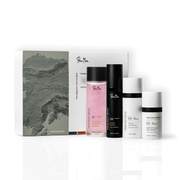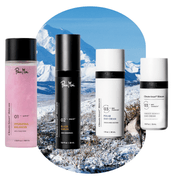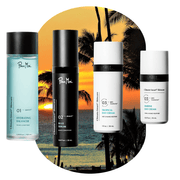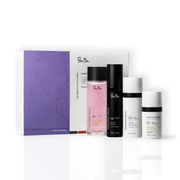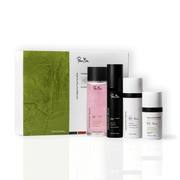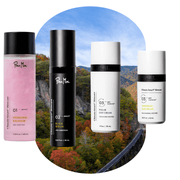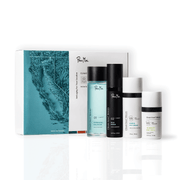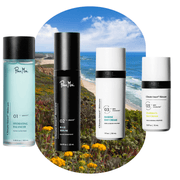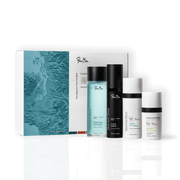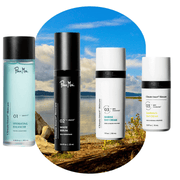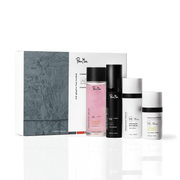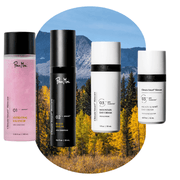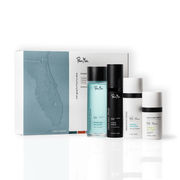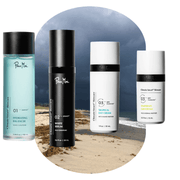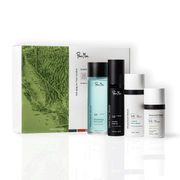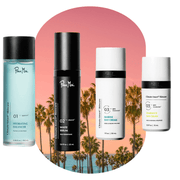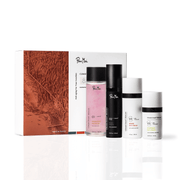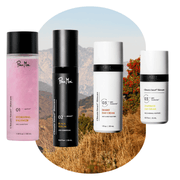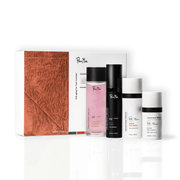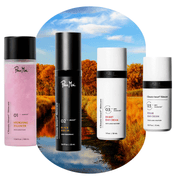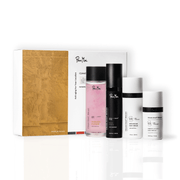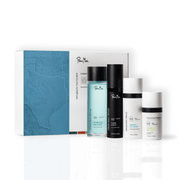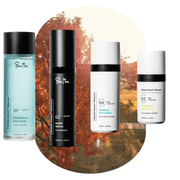23 August 2024
Barrier Breakdown: The Impact of Humidity on Skin Protection
Humidity—whether it’s bone-dry or dripping-wet—has a major influence on your skin. And depending on whether humidity is too high or too low, it can either support your skin or work against it, making it harder for your skin to stay healthy. At the heart of this connection lies your skin’s barrier function, the superstar of skin protection, also known as the stratum corneum.
Think of the stratum corneum as your skin’s personal bodyguard - acting as a shield for this outermost skin layer - fending off environmental stressors, the initiators of aging, and keeping the good stuff (like moisture) in. But what happens when your skin’s natural barrier gets exposed to different humidity levels? Depending on whether the air around you is dry as a desert or as humid as a tropical rainforest, your skin can react in ways that might surprise you. With this in mind, let’s explore what happens biologically when your skin's natural barrier is exposed to either high or low humidity and discuss some of the various skin issues that can ensue.
Low Humidity: The Thirsty Skin Struggle
- In low humidity environments, the air is parched, and it wants to steal every bit of moisture it can from your skin. When there isn’t enough moisture in the air, the water content in your stratum corneum evaporates more quickly. This dehydration leads to a compromised skin barrier, making your skin more vulnerable to external irritants and allergens. As your skin dries out, it can become tight, flaky, and more prone to developing fine lines and wrinkles [1].
- At a biological level, the lack of moisture causes the lipids (fats) in the stratum corneum to break down, weakening the skin’s barrier function. This breakdown can lead to increased transepidermal water loss (TEWL), where water passes from the body through the epidermis and evaporates into the air, leaving your skin even drier [1]. When the skin is dehydrated, it also struggles to repair itself from environmental stressors, which can lead to a cascade of issues, including inflammation, redness, sensitivity [1], and ultimately aging.
Low Humidity: Key Issues
- Wrinkle Formation: Dehydration accelerates the appearance of fine lines and wrinkles. Without adequate moisture, the skin loses its elasticity, making wrinkles more pronounced [1].
- Inflammation and Sensitivity: The weakened barrier allows irritants to penetrate the skin more easily, leading to inflammation and increased skin sensitivity. This can result in conditions like eczema or dermatitis, which flare up when the skin is unable to protect itself effectively [1].
To combat environments with low humidity, we recommend Pour Moi's Arid Skin Balancer, Black Serum, and Desert Day Cream.
High Humidity: A Double-Edged Sword for Your Skin
On the other hand, high humidity creates a different set of challenges. When the air is saturated with moisture, your skin can struggle to regulate its natural oil production. This can result in a buildup of sebum (oil), which mixes with sweat and environmental pollutants, leading to clogged pores and acne [2].
In humid conditions, your stratum corneum may become “swollen” with excess water, leading to a temporary weakening of the skin’s barrier.
- When the air is super humid, your skin can soak up a bit too much moisture.
- This extra hydration messes with your skin's natural process of shedding old, dead skin cells.
- Normally, your skin has tiny "glue-like" structures called desmosomes that hold these cells together.
- Special enzymes usually break down this glue, letting the dead cells fall away naturally.
- In high humidity, these enzymes can't do their job properly, causing the old cells to stick together and hang around longer than they should [3].
This can make your skin more susceptible to infections and other issues because the normal shedding process of dead skin cells is disrupted. When those dead cells pile up, your pores can get clogged, potentially creating a breeding ground for bacteria which can lead to breakouts and acne, dermatitis, and other skin infections [3].
High Humidity: Key Issues
- Acne and Clogged Pores: Excess oil combined with sweat and environmental debris can clog pores, leading to breakouts and acne, worsening of conditions like dermatitis [2].
- Increased Risk of Skin Infections: The combination of moisture, oil, and heat can create an ideal environment for bacteria and yeast to thrive, leading to skin infections such as folliculitis (infection of the hair roots) or bacterial acne [2].
- Exacerbation of Skin Conditions: Conditions like eczema, rosacea, and heat rash can become worse in high humidity as the skin struggles to maintain balance. The excess moisture can cause irritation, leading to redness, itching, and inflammation, making your skin look rough, old, and dull [3].
For humid climates, we suggest using Pour Moi's Humid Balancer, Blue Serum and either the Tropical or Marine Day Creams.
Tips for Managing Your Skin in High and Low Humidity
Now that we understand the impact of humidity on the stratum corneum, let’s explore some practical tips for managing your skin in environments with both high and low humidity.
1. Rotate Your Skincare Routine with Climate-Smart Products
-
Your skin's needs change with the weather, so your skincare should too! Using products that are specifically formulated for your current climate is crucial. Pour Moi’s Climate-Smart® Skincare line allows you to rotate moisturizers according to the day’s weather, ensuring your skin gets exactly what it needs whether it’s dry and cold or hot and humid. This adaptation helps maintain the strength of your skin’s barrier function, preventing the issues associated with both high and low humidity.
2. Stay Hydrated—Inside and Out
- In low humidity, your skin is crying out for moisture. Make sure you’re drinking plenty of water, which can help maintain hydration levels within your body, indirectly supporting your skin. In high humidity, while your skin might be more oily, it's important to maintain your hydration levels as well. Dehydration can still occur internally, affecting overall skin health.
3. Use a Humidifier in Low Humidity Environments
- In dry climates, using a humidifier can help add moisture back into the air, which will, in turn, benefit your skin. This is particularly helpful during the winter months when indoor heating can suck the moisture out of the air, leaving your skin feeling parched.
Adapt Your Skincare for a Happy Stratum Corneum
Understanding how humidity affects your skin is the first step to maintaining a healthy, radiant complexion year-round. By adapting your skincare routine to match the weather, you can protect your skin from the challenges posed by both high and low humidity. Pour Moi’s Climate-Smart® Skincare line offers a unique solution that adjusts with the climate, ensuring your skin is always at its best, no matter what the weather brings. Keep your stratum corneum strong and resilient by giving it the tailored care it needs to thrive in any environment.
References:
Rajkumar, J., Chandan, N., Lio, P., & Shi, V. (2023). The Skin Barrier and Moisturization: Function, Disruption, and Mechanisms of Repair. Skin Pharmacology and Physiology, 36(4), 174-185. [1]
Mieremet, A, Bioton, W, et al. (2019). Unravelling effects of relative humidity on lipid barrier formation in human skin equivalents. Archives of Dermatological Research, Nov;311(9):679-689. [2]
Parker, E. R., Mo, J., & Goodman, R. S. (2022). The dermatological manifestations of extreme weather events: A comprehensive review of skin disease and vulnerability. Journal of Climate Change and Health, 8, 100162 [3]




